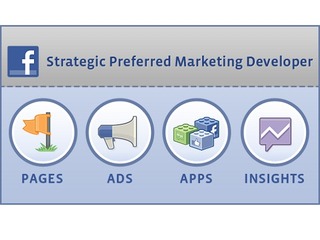
Facebook overhauls Android SDK with new controls
Social network also creates Android Dev Center, with tutorials on how to build apps

Facebook has made it clear that it wants to make money, and based on the way the stock price has been trading, public investors have little faith that Facebook has figured it out. But the company has made unbelievable amount of moves in the last two months or so to shore up that revenue.
The social network made another move in that direction Thursday, announcing a major update to its SDK for Android and introducing a new Android Dev Center.
The updated Facebook SDK 3.0 Beta for Android, which it calls “the biggest overhaul of our Android SDK so far,” includes new native UI controls.
Among the controls now being offered are Friend Picker, which allow developers to tag friends or find people who have installed their app; Places Picker, which shows places with customizable locations nearby; Profile Picture, which shows the profile picture of anything on Facebook, be it person, place or thing; and new login controls that are meant to simplify how user identify and app permission are managed.
The new SDK also allows for simplified session management, better support, and install measurement.
To help with session management, Facebook has included several tools that simplify authentication and authorization, caching of the login state in SharedPreferences by default, and the ability to serialize sessions to support low memory scenarios.
To provide better API support, Facebook is allowing developers to batch SDK requests for API calls, callbacks and listeners are factored in to better support MVC-style programming, and Facebook JSON data can be manipulated with strongly-typed interfaces.
And the mobile install measurement allows you to measure clicks and installs for mobile app install ads.
“With this update, our SDK provides advanced functionality that makes it easier to build more immersive social experiences, as well as better distribute and promote your app,” Facebook engineer Michael Marucheck wrote in a blog post.
“With our SDK and Open Graph, now it's even easier to get more people to install and use your apps regularly.”
Android Dev Center is meant to help developers learn the basics of using Facebook’s SDK for Android.
Includes four helpful guides to figuring out how to use the SDK.
- Getting Started – shows developers how to install prerequisites they will need to build their app, including Eclipse, the Android SDK, and the ADT Plugin. It also shows how to install the Facebook SDK for Android and how to import the SDK into Eclipse.
- Tutorial – A walk through of how to build Facebook integration with a sample app called Scrumptious.
- Concepts – Teaches developers how to build, distribute and promote their app on Facebook.
- Reference docs – provides documentation and sample code so developers can start coding.
Facebook brand development
While SDK for Android is meant for users who want to develop their own apps, Facebook has also taken steps for brands find the best developers on Facebook.
Facebook created the Preferred Marketing Developer program in April, “to bring developers to the right clients and make it possible for any brand or company to find consultants who can work with them to build comprehensive Facebook campaigns and presences.”
The point of the program was to better connect brands and developers, by weeding out companies that seemed shady or suspect.
Facebook currently has 318 Preferred Marketing Developers, so in September is debuted Strategic Preferred Marketing Developers, a distinction that will make it easier for brands to find the best developers available on Facebook.
It initially chose 12 companies to be Strategic PMDs Adobe, AdParlor, Alchemy Social, Brand Networks, Glow,GraphEffect, Kenshoo, Nanigans, Salesforce, SocialCode, Spruce Media, and 77Agency.
The companies are given special privileges, including: priority support from Facebook; access to alpha and beta trials; improved turn-around times for reviews and technical problems; improved access to Facebook’s product and engineering teams; and trainings on products that are tailored to the company’s needs and focus.
(Image source: https://developers.facebook.com)
Related News


Facebook creates most-favored partner list for brands

Facebook making businesses pay to run Offers

